Finland had been part of the kingdom of Sweden from the Middle Ages until the early nineteenth century, when the Napoleonic Wars reshaped the map of Europe. The Russian emperor Alexander I acted in concert with Napoleon when his troops crossed the Finnish border in February 1808. The eighteenmonth war ended in Sweden’s defeat, and Finland was annexed to the Russian Empire with the Treaty of Hamina, signed in 1809. This change of rule turned out to be beneficial for the Finns, as under Russia, Finland achieved a position of internal autonomy. Finland grew wealthier and Finns had a favourable view of the empire as their ‘mother country’ until the final years of the nineteenth century, when Russian attempts to increase the hegemony of the empire reached Finland. The imperial manifesto issued in February 1899 intended to transfer some of the lawmaking concerning Finland to the central government of Russia. Finns saw this narrowing of their autonomy as a coup d’état and protested in various ways with the purpose of making the emperor withdraw the manifesto.
The desires of the Finns were supported by many cultured Europeans in the spring of 1899, but the Finns received little concrete political support. Most leaders of European countries avoided commenting on Finland’s situation because they considered their countries’ good relationships with Russia more important. As the February Manifesto was not withdrawn, Finns adopted a strategy of passive resistance. The old laws were viewed as the Constitution, and the political forces that formed a group based on these laws were called the Constitutional forces. New laws, on the other hand, were considered unlawful and, therefore, were not obeyed.
The revolutionary movement that emerged in Russia in 1905 spread to Finland but was generally non-violent. In October 1905, Finns showed their strength in a general strike, organized to spur on the demands for restoration of Finland’s previous position of autonomy. The ‘Great Strike’ had the support of practically the whole nation, and this was the first time that working people emerged as a political force in Finland. In addition to demands for restoring Finland’s position as an autonomous state, the workers demanded social and parliamentary reforms.
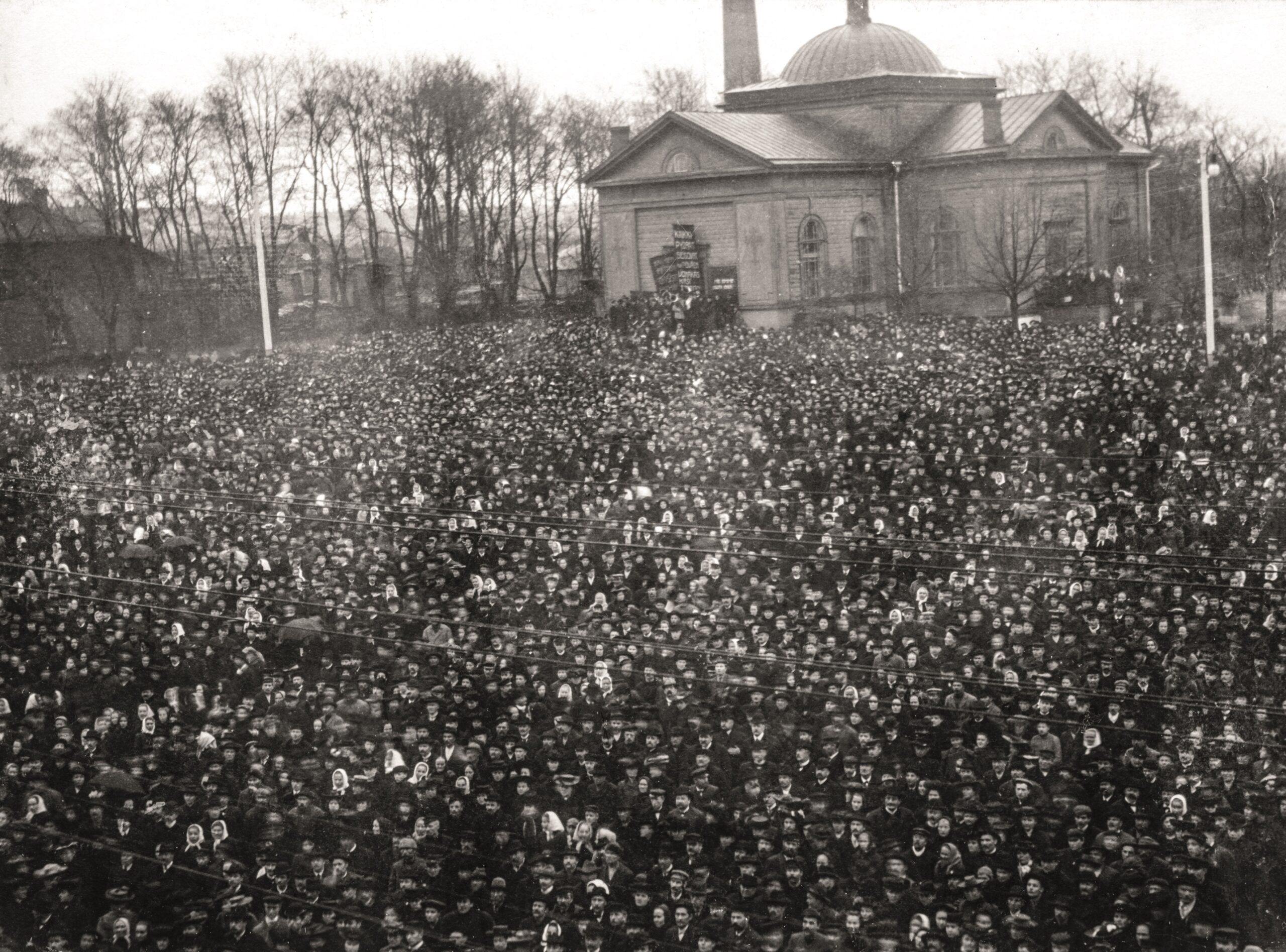
Russia’s own revolution forced Nicholas II to grant concessions to the Russian people and, at the same time, to Finns. The Russification measures that had begun after the February Manifesto were cancelled. A parliamentary reform was carried out in Finland in 1906. The old Diet of the Estates was replaced with a unicameral parliament based on universal suffrage. All Finns who were twenty-four years of age or older had a vote and could stand as candidates in the election. As a result of this radical reform, female Finns were the first women in Europe to be given the right to participate in state elections.
After the 1905 revolution, Nicholas II was able to restore his autocracy in Russia, and he resumed his Russification attempts in Finland in 1908. Finns protested, in vain, and hoped for things to return to what they had been. Independence was not even dreamt about in the country of three million people, but Finns did consider autonomy under Russian rule a realistic alternative.
Finland and the First World War
In August 1914, World War I broke out in Europe. Russia joined with France to fight against Germany and its ally, Austria-Hungary. When Great Britain entered the war, Russia, France, and Great Britain formed a strong alliance that was expected to crush Germany quickly.
A state of war was declared in Finland and Russians prepared for trouble. As in 1905, they expected a general strike that would bring the whole country to a halt, sabotage on the railways, and the destruction of telephone and telegraph lines. This did not happen. The old loyalty to the emperor and the empire was once more rekindled in Finland. Finns supported Russia’s war efforts as best they could, hoping that Russia would return the favour by restoring the position that Finland had enjoyed before 1899. Finns did not have to fight in the war because they had been exempted from general conscription.
However, Russia did not grant the political concessions that Finns had hoped for, which led to the evaporation of loyalty to that ‘mother country’ in the autumn of 1914. Although not many Finns believed that Finland would ever be free of Russia, the most radical activists began to foster the idea of Finnish independence. The younger generation in particular did not believe that anything good could ever come from Russia again. During World War I, Germany supported many ethnic minorities within Russia in an attempt to weaken its enemy, and Finnish activists managed to reach an understanding with the Germans. The Jäger troops were created, and starting in 1915, a secret activist organization sent young Finns to Germany to take part in military training.
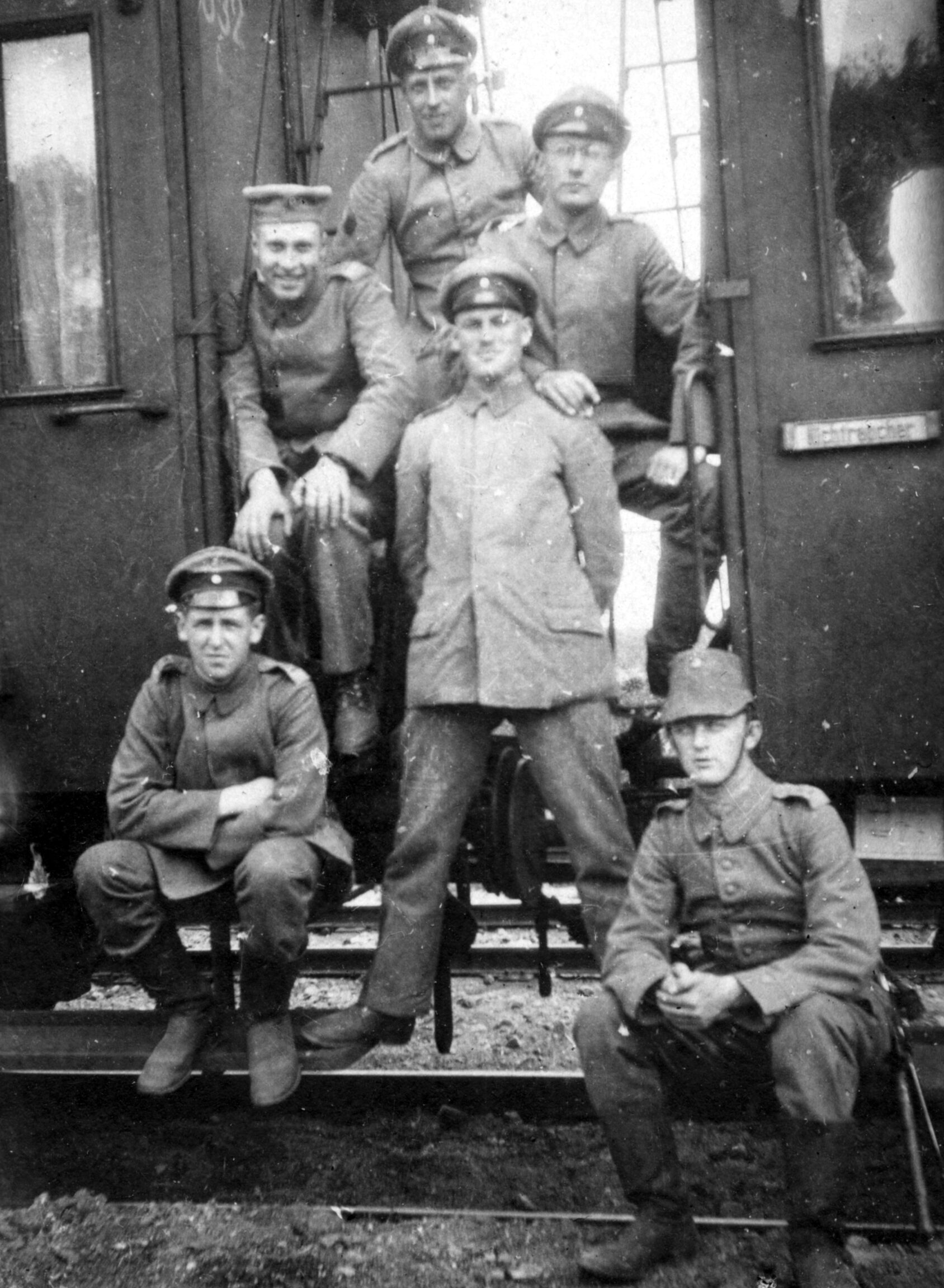
As Europe was fighting World War I, Finland remained peaceful, until 1917. Following the short period of disturbance after the outbreak of the war, Finnish industry benefited from Russian orders for military equipment. As the war dragged on, Finland’s economic importance grew further as the most developed, western areas of Russia were occupied by Germans. At the beginning of 1917, about forty thousand workers in Finland were employed in the military industry.
In the spring of 1917, the Russian Revolution began, and Nicholas II gave up his crown on 16 March. In Finland, the handing over of power led to some violence from the Russian military. In the heat of freedom, Russia finally gave the Finns some concessions. With a declaration issued on 20 March, the Provisional Government that took over in Russia during the revolution cancelled the acts and decrees that had been issued after the February Manifesto of 1899, and Finns began to rebuild their own government. The situation became more complicated as Finns were no longer satisfied with their previous autonomy.
However, Finns did not form a unified front. After the March Revolution, Russia’s orders for military equipment collapsed, which led to unemployment in Finland, while the discontinuation of the grain supply from the mother country resulted in a food shortage. Many social questions awaited resolution, and the key question was on whose terms the decisions were going to be made. Finns ended up fighting each other for power. Opposed were the working people led by the Social Democratic Party, on the one hand, and the non-socialist front, on the other.
Finland’s independence from Russia
After the March Revolution, half of the Senate consisted of Social Democrats and the other half of non-socialists, but this proved to be a powerless government. The parliament, which had a socialist majority, proclaimed itself as the seat of supreme power in July 1917, but Russia’s Provisional Government did not approve and dissolved the parliament. In the elections held in October, the non-socialists won a majority in parliament and formed a non-socialist government under P. E. Svinhufvud. This new government also lacked sufficient authority and a functioning police force to implement its decisions. As there was no power at the top, local power building began. Particularly from the autumn of 1917 onward, both workers and non-socialists aimed mainly to secure their own interests by establishing local civilian guards. At first, these were unarmed patrols, but gradually they transformed into groups preparing for military action. In the civil war, workers’ guards carried the name ‘Red Guards’, while the guards set up by non-socialists for their protection went under the name of ‘Civil Guards’ or ‘White Guards’.
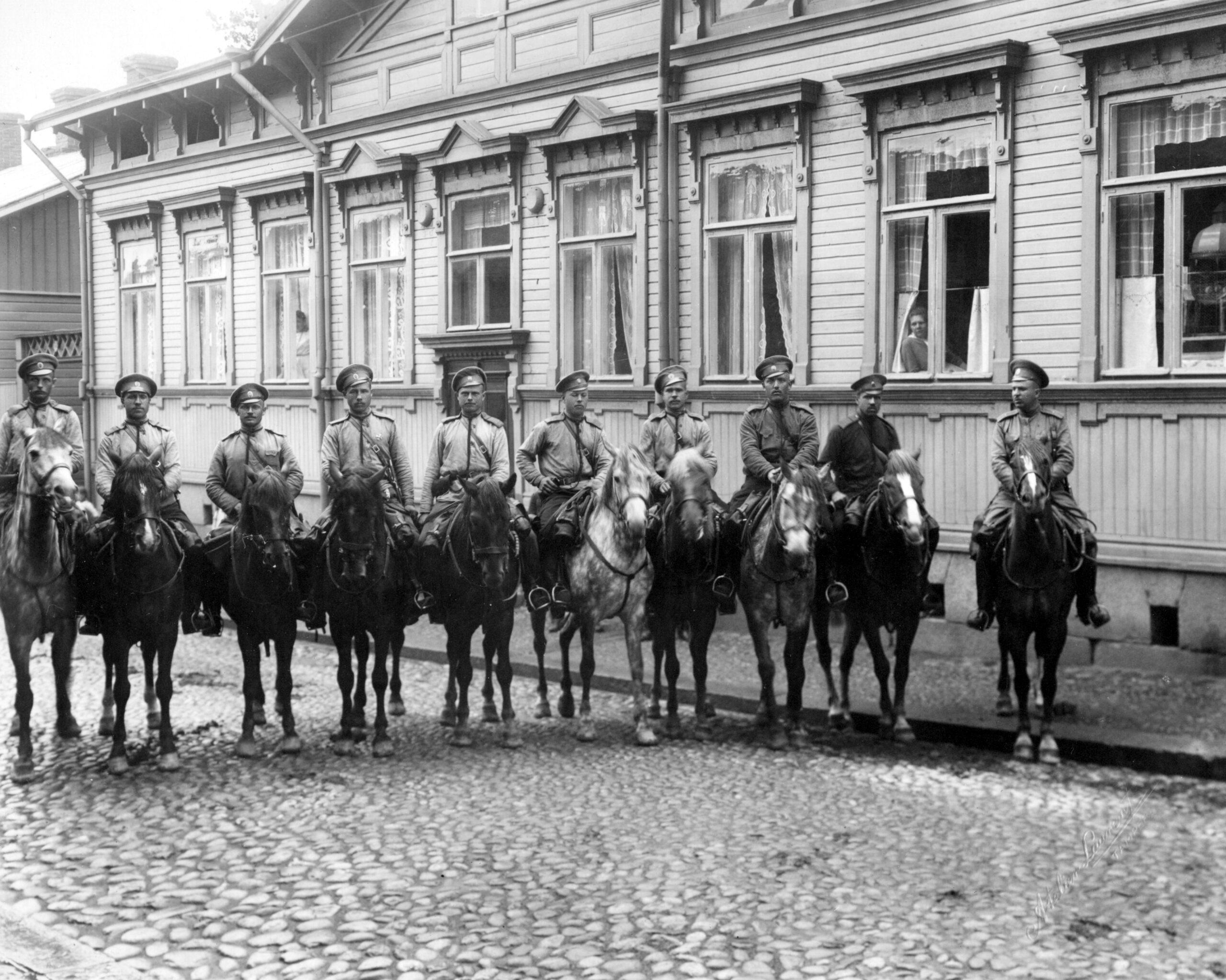
When Lenin and his Bolsheviks took over Russia in November 1917, Svinhufvud’s government decided to declare Finland independent. With the support of the non-socialist majority, the parliament issued a declaration of independence on 6 December 1917. The Social Democrats were not opposed to independence, but they hoped to negotiate with the Bolshevik government first and wanted to increase the powers of the parliament. Lenin’s government recognized Finland’s independence on the last day of 1917. Foreign powers that recognized Finland as an independent state in the first days of January included Germany, France, and Sweden.
The hands of Svinhufvud’s government were tied. Finns were divided into two camps, and there were still approximately forty thousand Russian soldiers in the country. The Social Democrats had ordered a general strike in November 1917 to promote their social causes, and, during this violent strike, the party had considered a coup d’état. While the party’s moderate wing still had the upper hand at that point, radical Red Guard leaders had taken control of the workers’ movement by January 1918. As the Social Democrats were preparing a coup d’état, the government tried to build its own military might. On 16 January, Svinhufvud gave orders to General Gustaf Mannerheim, who had previously served in the Russian army, to create a strong police force in Finland. A short while later, on 25 January, the Civil Guards established by non-socialists were appointed as government troops. The Social Democrats regarded the act as coup d’état.
The Civil War begins
In January 1918, both sides were feverishly preparing for war. Both workers’ guards and White Guards were poorly armed and ill-trained. Workers might have been able to usurp power, using weapons from local Russian garrisons, but a war of revolution would have required more weapons. Finally, on 13 January, Lenin gave Red Guard leaders a promise of arms deliveries. With the support of the Red Guards, the Social Democrats began a revolution in Helsinki on the night of 27/28 January. That same night, Mannerheim ordered the White Guards to begin disarming Russian troops in Ostrobothnia. The weapons that the Whites acquired were a prerequisite for the warfare that was to come.
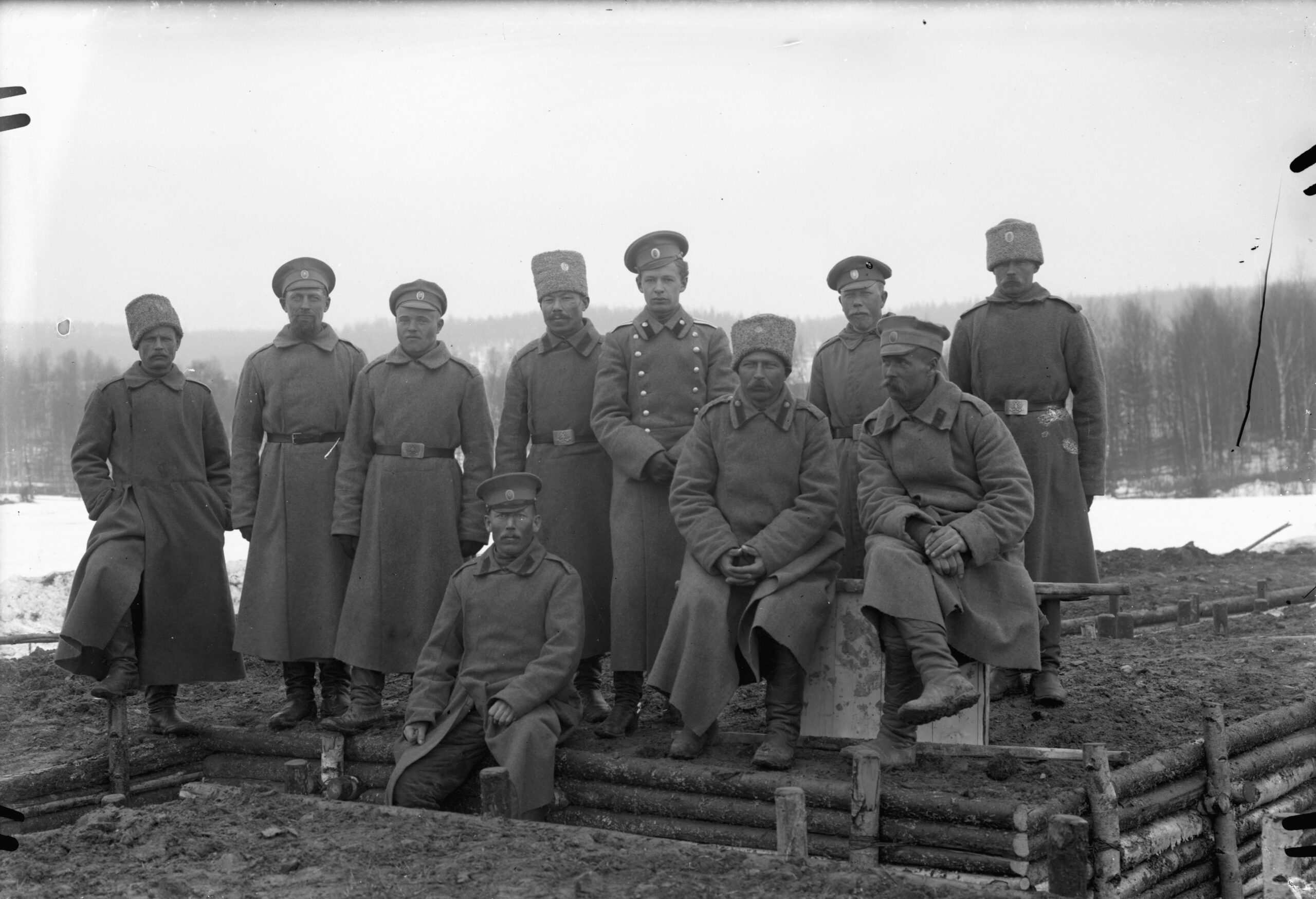
From the beginning of February, the Red and White troops were in position along a front slightly north of the Pori–Tampere–Heinola–Viipuri line. In February and March, the Reds tried in vain to break through the thinly manned White front. The government had now moved to Vaasa and needed more men. On 18 February, it initiated conscription in the area it controlled. Another important boost to the White troops came with the arrival in Vaasa on 25 February of the 950 German-trained Jägers. In total, 1,261 Jägers fought on the White side in the civil war. As there was dire need for men with military training throughout the country, the Jägers provided the White Army with a vitally important addition to lower-ranking and non-commissioned officers.
With only a few exceptions, the Red troops were led by workers with no military training at all. Only a few Russian officers joined the revolutionaries. The Red troops totalled no more than ninety thousand during the war. Including local Civil Guards, the White troops were eighty to ninety thousand strong.
The conflict between the Reds and the Whites in Finland was connected to the civil war in Russia. During the Finnish Civil War, Lenin’s Bolshevik government supported the Reds in order to ensure the security of their capital, St Petersburg, and also to spread the revolution to other countries. However, the Bolshevik government’s opportunities to assist the Reds were limited. In fact, the Bolshevik government had to focus its scarce revolutionary troops elsewhere in order to protect the less than secure power of the soviets. The Finnish Reds were disappointed with Russia’s assistance, which, in the end, mainly comprised of weapons.
The Germans take an active role in the War
The Germans were also involved in the Finnish Civil War. In the autumn of 1917, they secretly supplied weapons to the Civil Guards established by the non-socialists. On 15 December 1917, the Germans and Russians signed a truce, but the sluggish peace negotiations tied the Germans’ hands for a long time. Germany did not wish to put the peace with Russia at risk by assisting the Whites in Finland. World War I was still raging on the western front, and the Allies had Germany in a stranglehold. The Germans badly needed raw materials and food supplies from the east. In order to restart the peace negotiations, German forces occupied Estonia in February 1918 and, on 3 March, Russia signed a peace treaty with the Germans in Brest-Litovsk.
Already before the Treaty of Brest-Litovsk, the Germans were talking the Finnish government into requesting assistance troops. In the end, an agreement was reached on 15 February 1918. The Finns were keen to obtain German assistance as the result of the civil war seemed uncertain. Despite this, Commander-in-Chief Mannerheim was opposed to the arrival of German troops in Finland. He tried to clinch the war before the Germans arrived, launching an attack at the most important Red stronghold, Tampere, on 15 March. Within a week, the White Army advanced to the outskirts of Tampere, but the town was taken only after two weeks of heavy fighting, on 6 April. The Battle of Tampere remains the largest urban battle ever fought in the Nordic countries.
The German expeditionary force, the Baltic Division, commanded by Major General Rüdiger von der Goltz, landed in Hanko, in southern Finland, on 3 April, and a smaller unit arrived in Loviisa four days later. The German troops numbered about twelve thousand in total. The Red capital, Helsinki, surrendered to the Germans on 13 April. The Reds tried to evacuate their troops to Russia, but the Germans in cooperation with the Finnish White troops managed to prevent this. The Reds who were retreating from Western Finland gave themselves up to the Germans near Lahti on 1 May, and twenty thousand Reds were taken as prisoners. The last Red troops surrendered in the first few days of May in southern Finland, ending the war. About thirty-five hundred Whites and almost seven thousand Reds had fallen. The Germans lost 345 men and the Russians a few hundred. In addition, fifty-five Swedish volunteers who had fought on the White side had been killed.
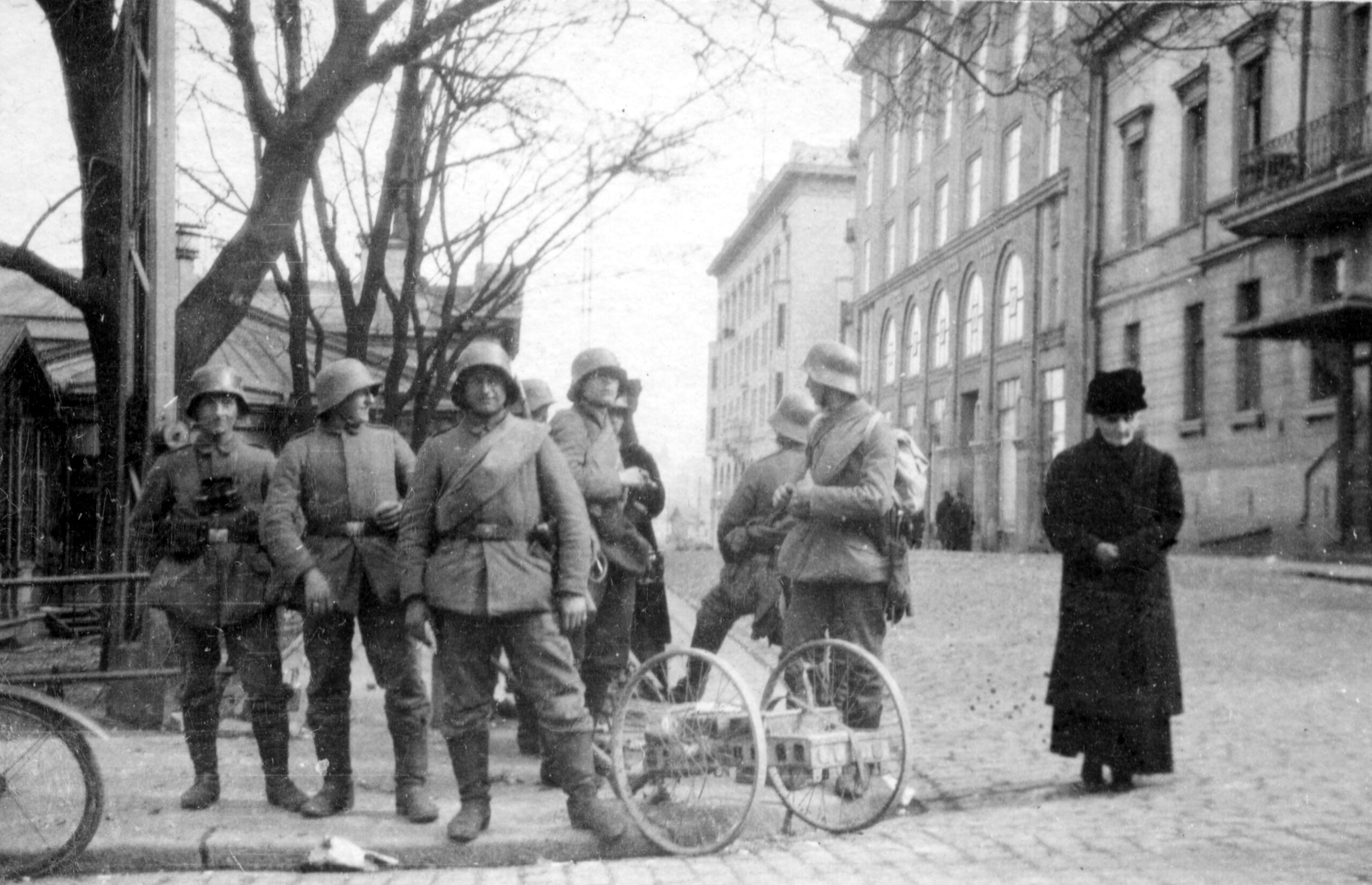
The Finnish Civil War was exceptionally brutal compared with internal conflicts in other countries. During the war, the Reds killed about sixteen hundred people outside the field of battle, but this phenomenon, known as the ‘Red terror’, was overshadowed by the revenge of the Whites. The White terror was heightened in the battles to occupy Red areas and peaked in April and May, when southern Finland was occupied by the Whites. In total, Whites executed about ten thousand Reds. Conditions at prison camps built by the winners also turned out to be exceptionally harsh, resulting in the death of about fourteen thousand Reds during the summer and autumn of 1918. In total, almost forty thousand people died in the Finnish Civil War and the punitive measures that followed.
After the war, the German expeditionary force stayed in Finland, and the leader of the Germans troops, General von der Goltz, wielded great political power. A German monarch was to be put in place Finland, however, after losing the World War, Germany withdrew its troops from Finland, in December 1918, and the Finnish monarchy plans were subsequently forgotten.